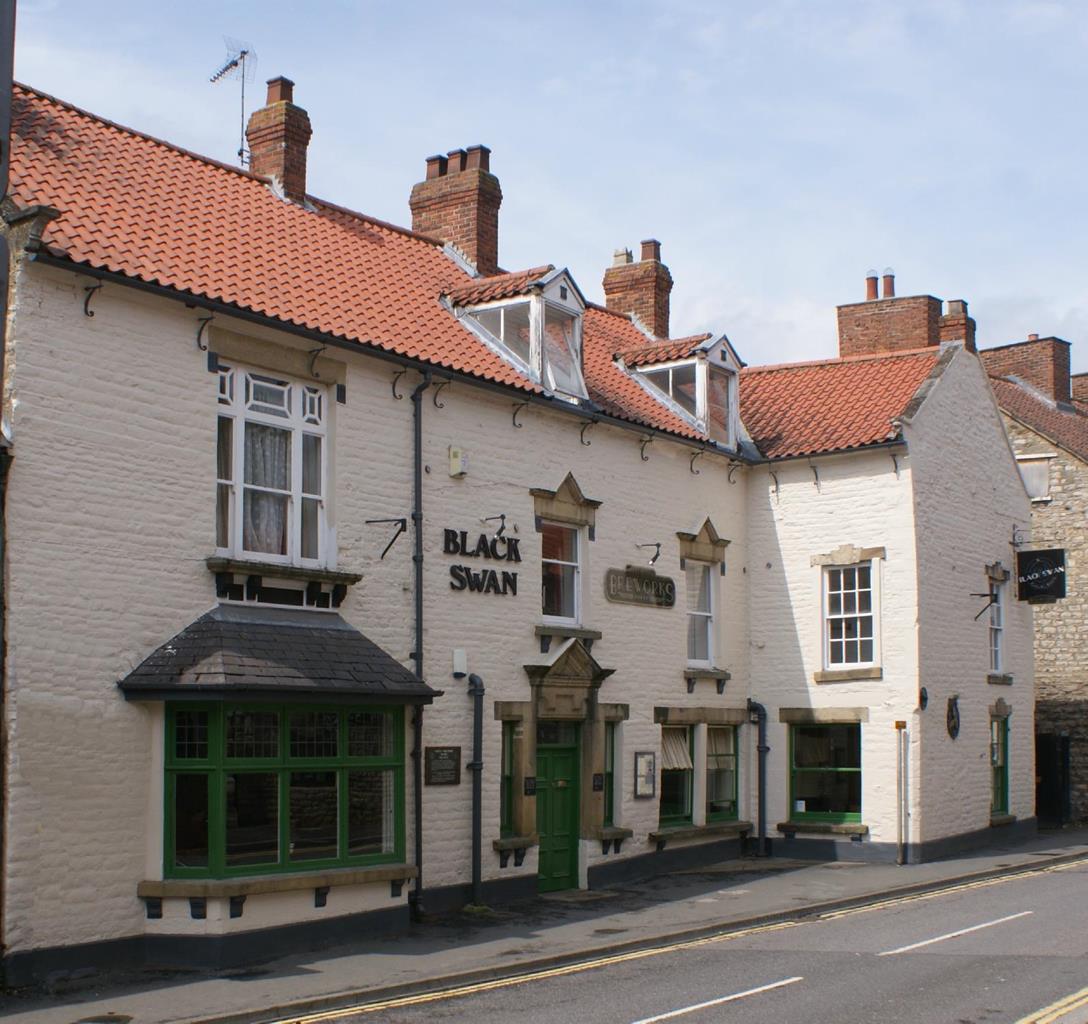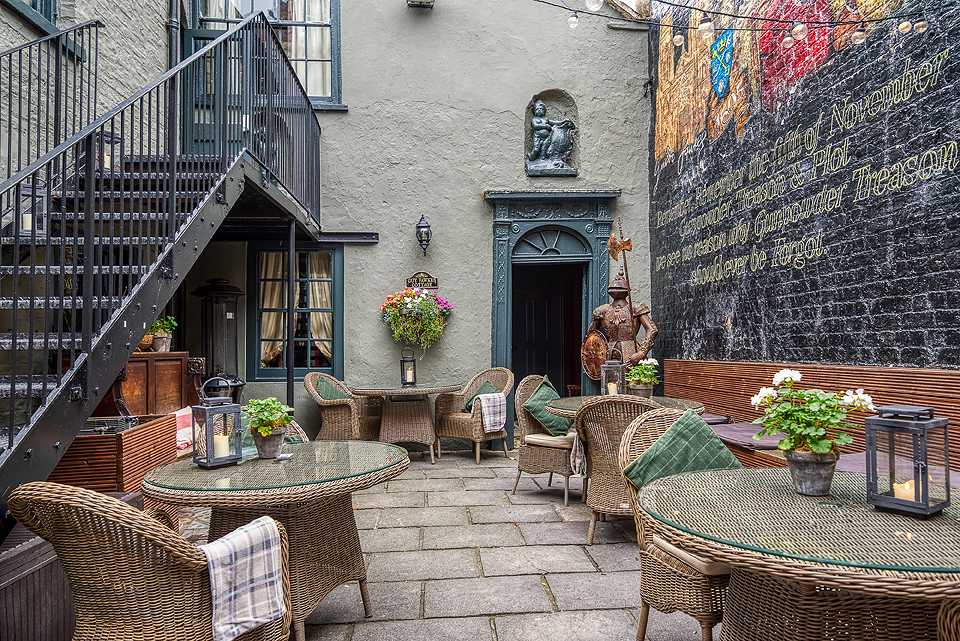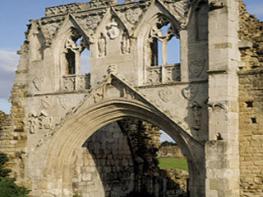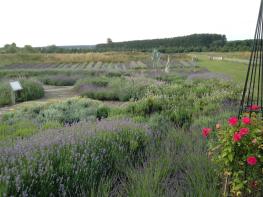Rose Cottage is a large detached country property on the Yorkshire Wolds Way. It has a large…
Thixendale and the Wolds Way

From the hidden village of Thixendale over chalk hills and through typical dry valleys.
4 miles (6.4kms)
About the walk
Chalk underlies the Yorkshire Wolds. Unlike the harder rocks of the Dales and the Moors, the Wolds chalk is soft and permeable, so the landscape around here is one of rounded hills and deep dry valleys. These were formed when the meltwater from the ice age glaciers rushed with tremendous force across the chalk. Our walk is through rich farming land – indeed, these slopes have been cultivated since neolithic people cleared them and set up home here more than 5,000 years ago.
More than half the walk follows the Wolds Way, a 79-mile (127km) National Trail that runs from the great bridge over the Humber Estuary to Filey Brigg. At its northern end it links with the Cleveland Way and at the southern end (via the Humber Bridge) with the Viking Way to Oakham in Rutland. Less frequented than many of the other National Trails, it offers consistently fine views and a wealth of archaeological interest along its pastoral route – as well as some very welcoming pubs. For much of the walk, too, you will be following the Centenary Way, a route established by North Yorkshire County Council in 1989 to mark 100 years of local government.
Some say that Thixendale is named from the six dry valleys that meet here; the more imaginative reckon to count 16 converging dales. Place-name dictionaries, more prosaically, link it to a Viking called Sigstein. Whatever its origin, Thixendale is one of the most remote of the Wolds villages, approached from every direction by deep, winding dry valleys between steep chalk escarpments. It has a number of old cottages, but much of its character is due to local landowner Sir Tatton Sykes in the later part of the 19th century. As well as building estate cottages, he contributed the church, the school and the former vicarage, picturesquely designed by architect George Edmund Street. Do visit the church – the stained glass by Clayton and Bell showing the Days of Creation is great fun, especially the flamingos and the fearsome waterspout.
Sir Tatton Sykes, 5th Baronet of Sledmere House, was a great church builder and philanthropist – and an even greater eccentric. He insisted that his body needed to maintain an even temperature, and was known to stick his bare feet out of the windows of railway carriages to make sure. As he warmed up on his walks he would shed clothing, paying local boys to return it to the house. He even wore two pairs of trousers to preserve the decencies as he divested himself. Flowers were a pet hate; he had the estate gardens ploughed up and told his tenants that the only kind of flowers they could grow were cauliflowers.
Walk directions
From the church, walk west along Thixendale’s village street. Just beyond the last house on the right, go up a track, following the Wolds Way/Centenary Way sign.
Where the track bears right as you approach the top of the hill, bear left following a Wolds Way sign, which takes you left along a grassy track. Go through a gateway, then straight on along the field side.
At the next Wolds Way sign, turn left as indicated on an adjacent sign to continue parallel to the track with a hedge on your left. At the top of the field go right by the sign. The path descends to reach a kissing gate, then descends more steeply into a dry valley to another waymarked kissing gate, then curves to a gate.
After the gate follow the blue public bridleway sign to the right, winding left up the side valley. Near the top of the valley is a deep earthwork ditch; go through a gate and continue along the edge of the field. Where the footpath divides at an acorn waymarker go right, through the patch of woodland, onto a track by a signpost.
Turn right and follow the Wolds Way sign. Follow this clear grassy track for 0.75 miles (1.2km). At the end of the woodland on your right, just beyond an acorn-topped Wolds Way sculpture, look out for a signpost. Turn right here, following the Centenary Way sign to go down the edge of the field to a track. Follow the winding track past two more Centenary Way signposts.
At the next signpost, turn right off the track, again signed ‘Centenary Way’. Walk down the field side on a grassy track. At the field end leave the track and go through a waymarked gate. The path goes left and passes along the hillside to descend to a stile beside a gate.
Follow the yellow waymarker straight ahead across the field. Pass over a track and continue to a sign by a stile. Go straight on, to the left of the row of trees. The path descends to the village cricket field on the valley floor. Go through a gate, onto a lane by a house then past the Cross Keys public house. When you reach the main road, turn right, back to the start.
Additional information
Clear tracks and field paths, 2 stiles
Deep, dry valleys and undulating farmland
Keep dogs on lead
OS Explorer 300 Howardian Hills & Malton
Thixendale village street near the church
None on route
WALKING IN SAFETY
Read our tips to look after yourself and the environment when following this walk.
Find out more
Also in the area
About the area
Discover North Yorkshire
North Yorkshire, with its two National Parks and two designated Areas of Outstanding Natural Beauty, is England’s largest county and one of the most rural. This is prime walking country, from the heather-clad heights of the North York Moors to the limestone country that is so typical of the Yorkshire Dales – a place of contrasts and discoveries, of history and legend.
The coastline offers its own treasures, from the fishing villages of Staithes and Robin Hood Bay to Scarborough, one time Regency spa and Victorian bathing resort. In the 1890s, the quaint but bustling town of Whitby provided inspiration for Bram Stoker, who set much of his novel, Dracula, in the town. Wizarding enthusiasts head to the village of Goathland, which is the setting for the Hogwarts Express stop at Hogsmeade station in the Harry Potter films.
York is a city of immense historical significance. It was capital of the British province under the Romans in AD 71, a Viking settlement in the 10th century, and in the Middle Ages its prosperity depended on the wool trade. Its city walls date from the 14th century and are among the finest in Europe. However, the gothic Minster, built between 1220 and 1470, is York’s crowning glory.
Nearby stays
Restaurants and Pubs
Nearby experiences
Recommended things to do
Why choose Rated Trips?
Your trusted guide to rated places across the UK
The best coverage
Discover more than 15,000 professionally rated places to stay, eat and visit from across the UK and Ireland.
Quality assured
Choose a place to stay safe in the knowledge that it has been expertly assessed by trained assessors.
Plan your next trip
Search by location or the type of place you're visiting to find your next ideal holiday experience.
Travel inspiration
Read our articles, city guides and recommended things to do for inspiration. We're here to help you explore the UK.













